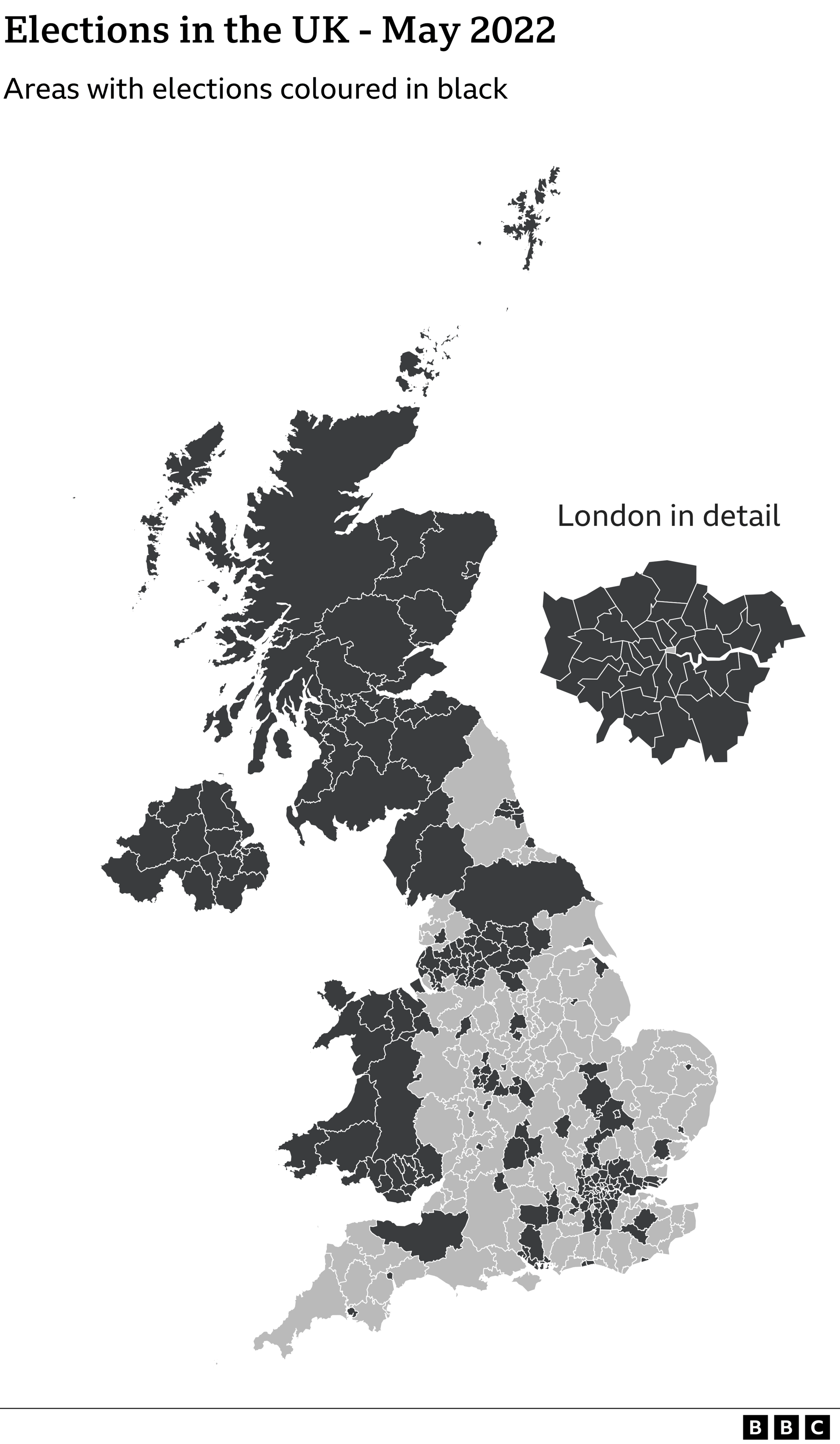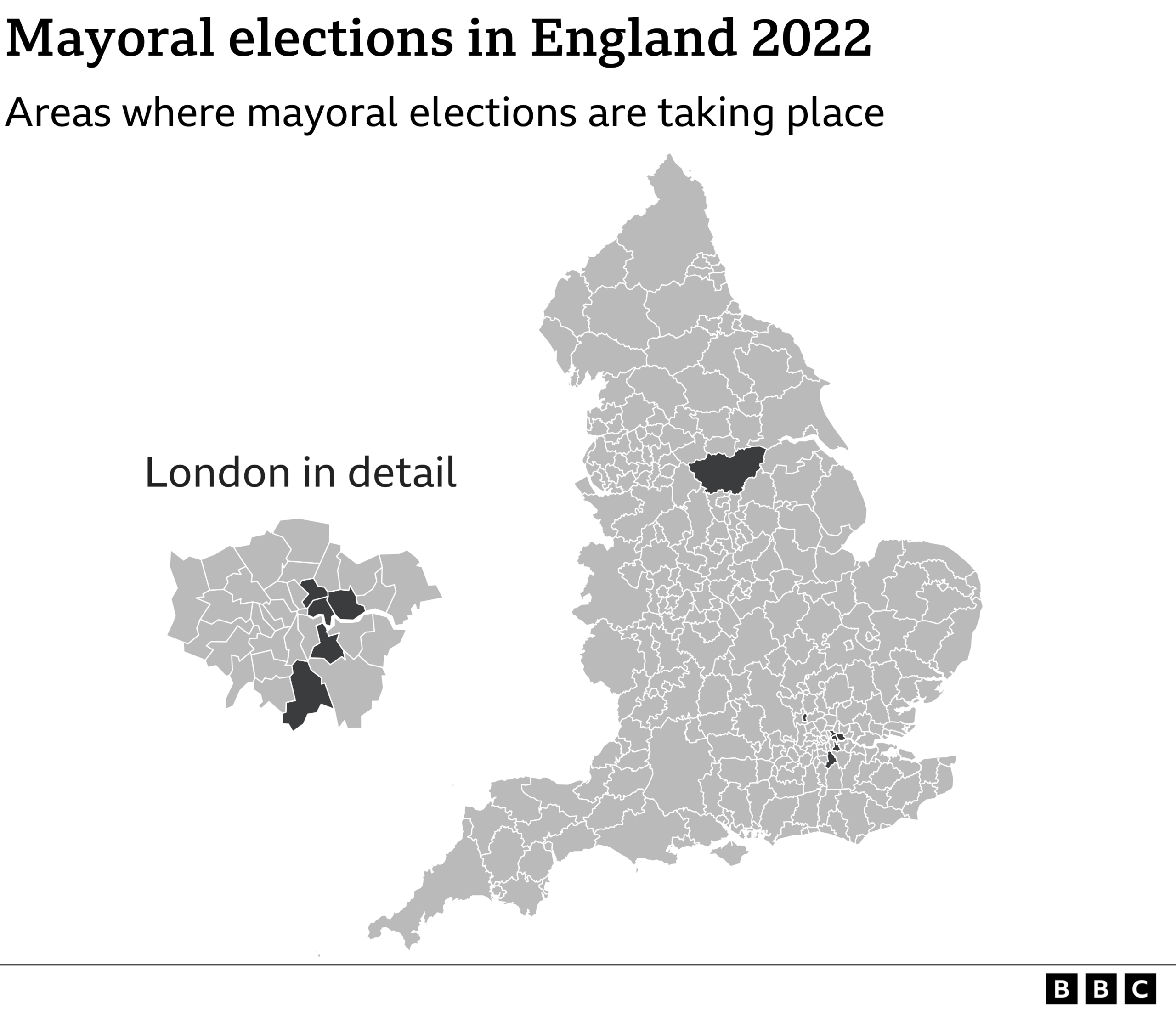Local elections 2022: How the BBC is reporting the results
- Published

Local council elections are taking place across England, Scotland and Wales, as well as some mayoral elections in England.
This is your guide to the results and how the BBC reports them. There is a separate guide to the Northern Ireland Assembly elections.
How is council control calculated?
If a party has a majority of councillors on any particular council, it is deemed to be in control of that council.
If no party has a majority then this is sometimes described as "Hung".
Council control prior to the election has long been defined by the BBC, the Press Association (PA) and others as the party, if any, that had a majority on the eve of the poll.
However, this may be different to the party that won at the last election.

For example, a party may have lost control of a council it won at the previous election due to defections or by-elections that have happened in the meantime.
If that party were to win the council again this year the BBC would describe this as a gain from: "Previously no party majority".
But if there was still no clear majority in the council it would be described as: "No party majority".
How is seat change calculated?
The change in the number of councillors for each party is calculated by comparing this election result with the result the last time these seats were contested.
For some councils not all their seats will be contested at this election, as some authorities only have elections for half or a third of seats at any given time.
In Scotland and Wales the seats were last up in 2017, while in London the last elections were in 2018.
In other parts of England these dates differ. For most councils the seats were last contested in 2018 but in some areas it was 2019 and others 2021.
There are some areas where change is more difficult to calculate because there have been boundary changes or the number of councillors representing each ward has changed. In four areas there are brand new councils.
In cases like this, the BBC uses "notional results" to project what the previous result would have been if the new boundaries had been in place at the last election.

WHAT'S HAPPENING WHERE: Really simple guide
NORTHERN IRELAND: Essential guide
SCOTLAND: Simple guide
WALES: Simple guide
ENGLAND: Simple guide

How are notional results calculated?
When the boundaries of council wards change, it is important to have an idea of how many councillors each party would have had if the new boundaries been in force last time the seats were contested.
This way the change in the number of councillors elected for each party can be calculated on a like-for-like basis.
This is not an exact science. When boundaries are redrawn and an area is moved from one council ward into another there is no official record of how that area voted.
This is where the experience and expertise of analysts comes in.
To calculate the notional results, analysts use maps of the old and new boundaries. They look at the area, and use local knowledge and professional judgement to help them work out how people are likely to have voted.
Using this information they recalculate the last election result to show how many councillors each party would have had if the new boundaries had been in place.
It is this figure that is used by the BBC to calculate change in these areas.
You can see if an area has had boundary changes in the 'About this council' section at the bottom of the results pages.
Mayoral elections
Mayoral elections are taking place in seven areas of England. Mayors are elected using a system where voters can rank the candidates on the ballot paper.
All the first preference votes are counted first.

If a candidate gets more than 50% of the vote they are declared the winner. If no candidates gets 50% then all but the top two candidates are eliminated. The second preference votes of the eliminated candidates are then counted to determine the final winner.